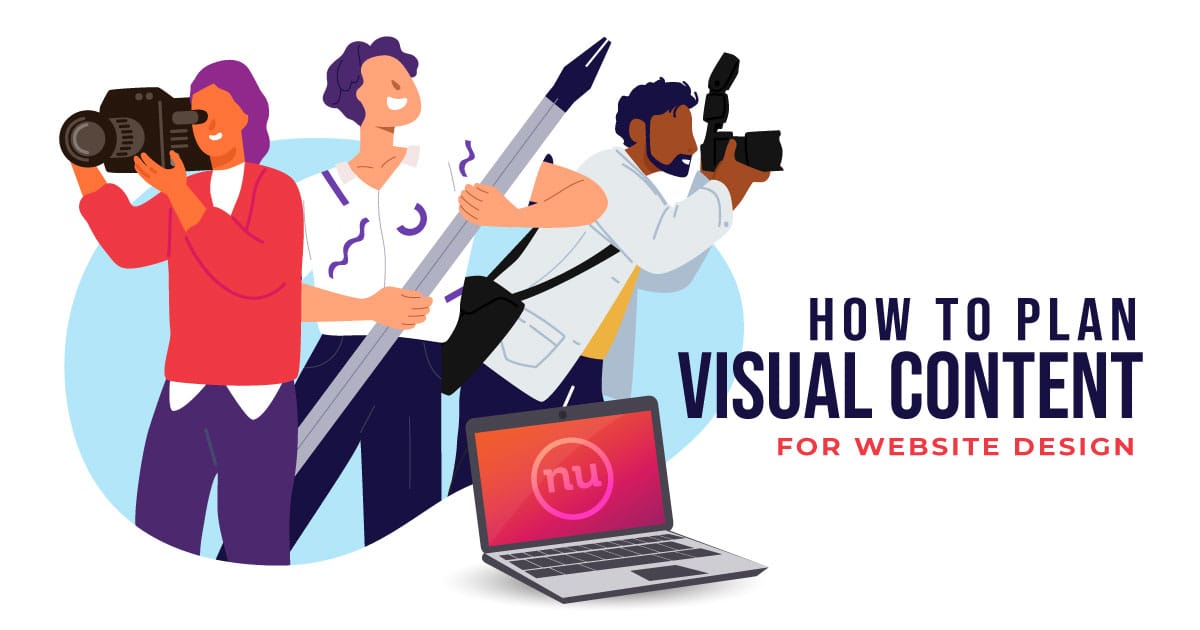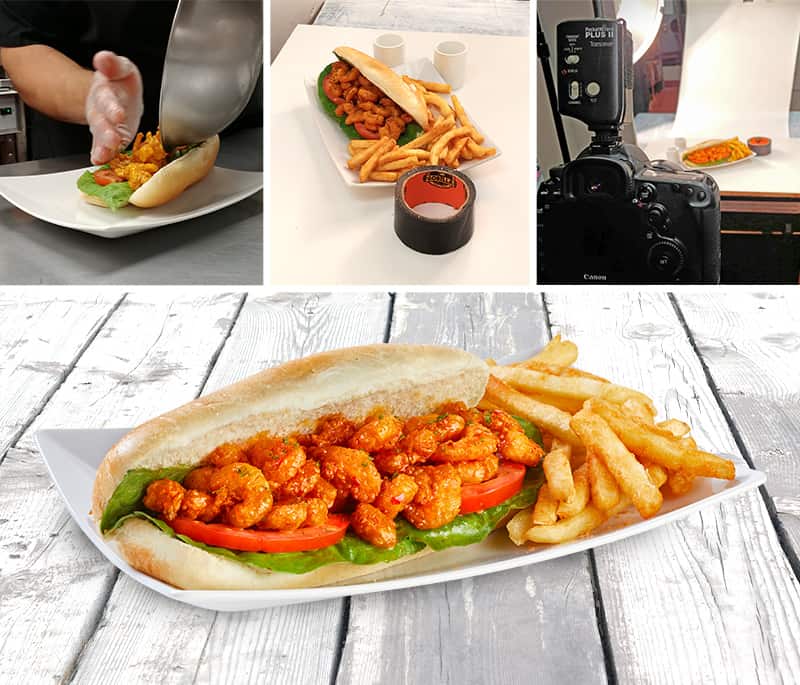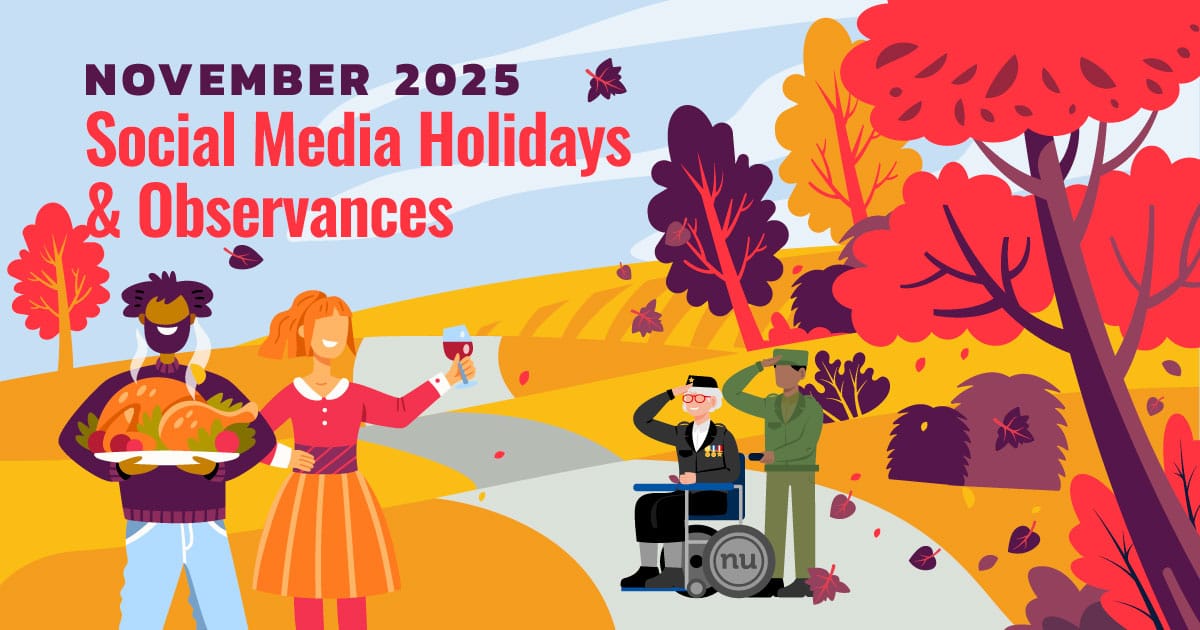
Whether it’s “wow-factor,” “POP,” or simply selling your customers’ desired future state, the creation of stunning visual imagery lies at the heart of any website design. As a marketing agency with a strong creative and web department, our mission is to convey a narrative that helps our clients declare at a glance “This is why we’re unique. This is why we’re special!” Chief among my duties as our agency’s creative director is the notion that it’s not sufficient to simply create good visual content, it has to be effective visual content. There is no greater synthesis of this than the exhaustive content and media planning that goes into a full website design. Ideally, this sprawling medium includes every relevant detail about an organization, and knowing how to tell that story is critical. Read on to learn more about how to plan visual content production for website design.
Establish a Budget
The irony behind creating exciting visual media is that the underlying effort largely consists of budgeting, scheduling, and production planning (yawn). Nevertheless, knowing what you can afford and how you’re planning to capture it are vital starting points in your content gathering. This can be a daunting prospect for even the most seasoned pros because simply put, content costs money. We regularly encounter a scenario in which the client, in an effort to reduce their production costs, promises us access to a rich media archive that is ready and waiting to be deployed, only to find that it is outdated, low-resolution, and unprofessionally captured. Good visual content is challenging to produce and, if your brand is trying to stand out in a saturated marketplace, your visual media is the very last place you want to cut corners. Knowing what you can afford upfront is the fastest route to a finished product and your best opportunity to help guide the website creation process. Here are some considerations when determining the best production methods for your budget.
Custom Videography
Typically video and other time-based media are the most impressive and the easiest methods to convey an idea, unfortunately, they are also the most expensive. Though we’ll dive into greater detail below, the takeaway here is that the cost of video can be exponential against still imagery but is often a necessary expense.
Custom Still Imagery
Though custom photography and illustration also come with a price tag, they are almost always more affordable than video and infinitely more catered than stock imagery. There may also be hidden benefits to utilizing simpler imagery when creating for the web, such as faster page-load speed and universal device compatibility.

Stock Imagery
Leaning on a stock catalog can be an attractive option from a cost perspective, but can also be limiting in many ways. Sure, you might get lucky and find exactly the right customizable photo, illustration, or video once, but lightning rarely strikes twice. If your organization features a unique business model or is predicated by your personality being present in the brand, then no amount of poring through stock catalogs will ever succeed in telling your brand’s story. If however stock must be utilized, it should be noted that customizing each file to your brand’s visual standards is critical.
Determine Your Content Needs
Now that the fastidious business of budget is behind us, we can look to the more exciting task of figuring out what content best serves the website. Assuming cost is no object, here are some considerations to be successful within each medium.
Still vs. Motion
As shared above, video production is a terrific way to provide a depth of understanding at a glance but your website will still require lots of static imagery. Leaning on the visual brand standards of your organization will help determine the types of visuals that will need to be gathered and the distribution of each. You might even consider mixing illustrative styles alongside photo and video content. These could be represented by anything from custom icon sets to feature graphics and can give your website a truly unique look.
Shot Lists, Storyboards & Outlines
How will you tell the story of your brand? Will it be through headshots of your leadership team, or perhaps a full commercial that requires knowing the beginning, middle, and end of your story? Whether it’s a simple list of shots your photographer needs to capture, all the way to a storyboarded sequence of events for a video shoot, your media team will need to plan the shoot days around a meticulously structured list of content.
Equipment
Nowadays, it’s not uncommon for the equipment you’re shooting on to cost more than the entire production itself! Knowing how you’re going to capture your content can be the determining factor in the quality of the finished product and, while shooting in 4k on a RED camera doesn’t come cheap, the results are undeniably stunning.
Audio
Though not technically a piece of visual content itself, audio is central to the video production process. There is no worse feeling than reviewing your footage from a shoot only to discover that not enough attention was paid to the quality of this vital element of time-based media. If your media team has accounted for this within their planning, it will dramatically improve the success of the final product where audio is involved.
Extras & Peripherals
There are potentially dozens of additional considerations when it comes to media production. These could include hiring hair/makeup artists, casting actors, booking craft services, paying audio royalties, heck – even union fees! Having a thorough understanding of your needs will turn what could easily become an expensive trainwreck into a smooth and successful operation.
Maintain Quality
Regardless of which kind of content is determined to be ideal for your project, maintaining consistent and curated quality is paramount. Video should be shot at the highest resolution and frame rate you can afford. Still, imagery should be able to convey a narrative through careful staging and planning. When utilizing stock, make sure to go the extra mile to edit the imagery to align with the organization’s colors and brand standards. The more detail-oriented your production team can be will warrant stunning results and your website will stand apart within the marketplace of ideas.

